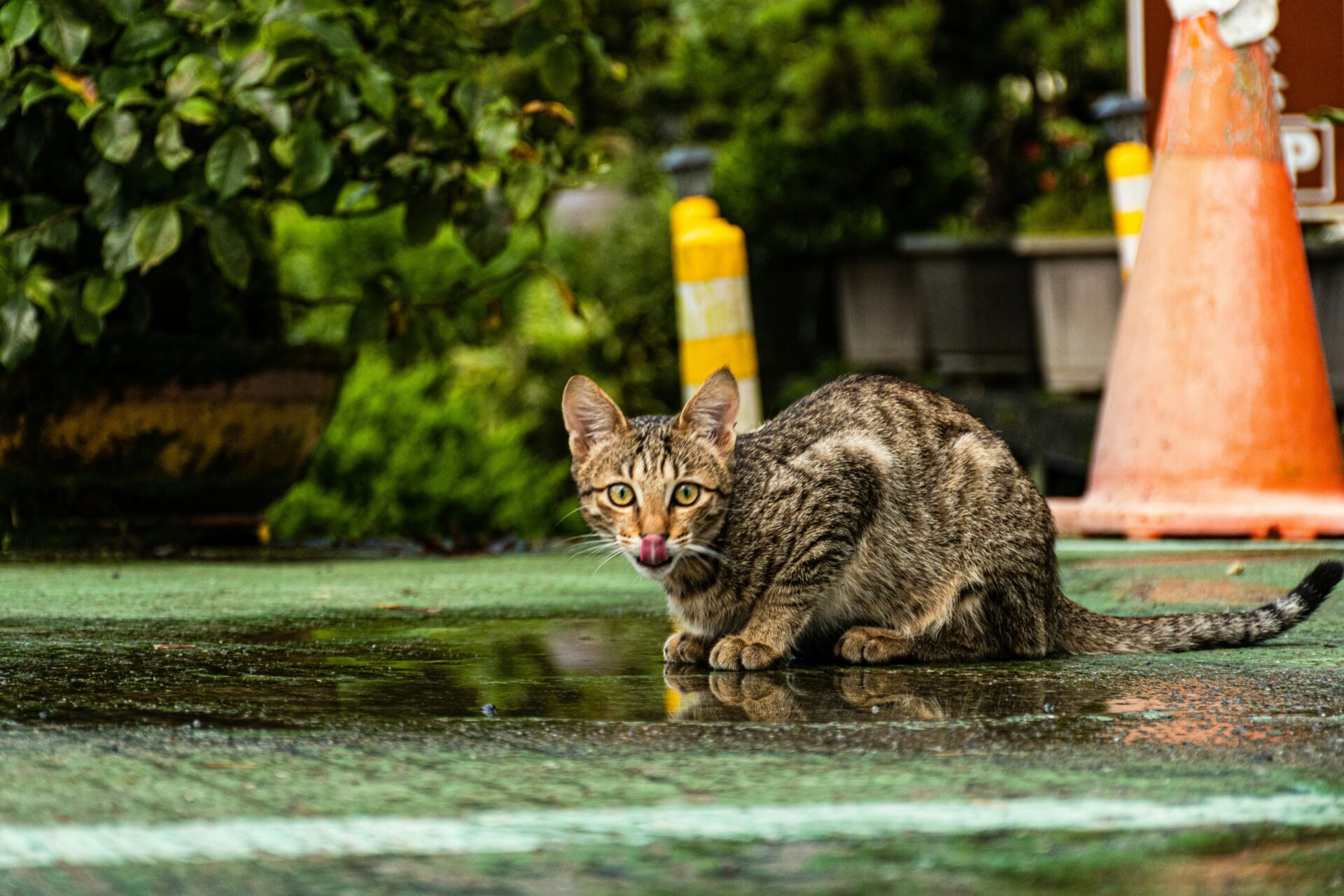September is National Preparedness Month, making it the perfect time to ensure you’re ready to protect your cat in emergencies like natural disasters, evacuations, or power outages.
No one wants to think about emergencies like this, but if you are a cat parent, it’s essential to be prepared to protect your feline family members. Before moving to Philly, I lived in Connecticut very close to the shore. The last few years I lived there, weather-related disasters such as hurricanes and tornadoes were all too common and it was terrifying (a big reason why I moved). I was always aware of what could happen if we had to evacuate. It got so bad, that we lost power many, many times during both the very hot and very cold months.
I always had a bag ready to go inside LolaBelle’s (she’s my Chief Kitten Officer) carrier for that unimaginable, just-in-case scenario. Thankfully, I never had to evacuate, but it was close a few times.
That said, here are practical tips for cat owners to be fully prepared:
Create a Pet Emergency Kit – use an easy-to-grab & go bag just for your cat. The bag should include:
- 3–7 days of cat food in airtight containers
- Utensils
- Bottled water
- Collapsible bowl
- Litter, disposable trays, and scoop
- Copies of medical records and recent photo
- Medications
- Pet-safe disinfectant, trash bags, paper towels
- Comfort items (blanket, toy)
- ID tags, microchip info, and vet contacts
Have a Plan
If you’ll be sheltering-in-place: choose a safe, quiet room with no escape routes (windows/vents during a hurricane). If you have to evacuate: Know the pet-friendly hotels, shelters, or boarding facilities in your area.
- Practice loading your cat into their carrier so it’s familiar and less stressful in an emergency
- Cats can easily get left behind during chaos, so keep a sturdy carrier accessible
- Add a rescue alert sticker near your door to alert emergency responders that pets are inside and indicate how many and what kind to ensure none are left behind
Microchip & ID are a Must
- Ensure your cat has a collar with ID tag and an up-to-date microchip
- Keep a recent photo on your phone in case you need to prove ownership or post “lost pet” notices
Stay Informed
- Sign up for local emergency alerts (texts, apps, NOAA weather radio)
- Follow your local animal shelters or humane societies—they often give pet-specific evacuation tips
- If you cat has special needs and is a senior or medically-at-risk cat, be sure to pack extra meds and medical instructions
- Feral or outdoor-only: Have an insulated emergency shelter or way to safely transport them if needed
While I know this isn’t pleasant to think about, it is important. Be prepared so you can remain as calm as possible during an emergency. There aren’t any solid statistics on this, but according to Google, during Hurricane Katrina in 2005, it is estimated that as many as 250,000 pets were left behind during evacuations. Of the animals that were rescued, fewer than 15% were reunited with their families.
This is heartbreaking.
So get prepared – our fur babies are counting on us. It could save their life.



